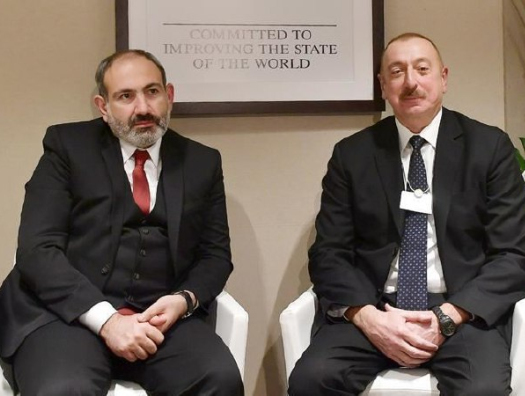Modern Life In Global Art: An Art Review (1850-1950)

Table of Contents
The Rise of Realism and its Global Interpretations
The mid-19th century saw the emergence of Realism, a reaction against the idealized and romanticized representations prevalent in earlier art. This movement aimed to depict the world as it truly was, focusing on everyday life, social issues, and the realities of the human condition.
Realism in Europe:
Realist painting in Europe found its champions in artists like Gustave Courbet. Courbet's works, such as "The Stone Breakers" and "Burial at Ornans," challenged artistic conventions by portraying laborers and ordinary people with unflinching honesty. This rejection of idealized representation was a hallmark of French Realism and a significant shift in artistic discourse.
- Key Works: "The Stone Breakers" and "Burial at Ornans" by Gustave Courbet exemplify the movement's focus on social realism and the depiction of everyday life.
- Artistic Techniques: Realist artists employed precise detail and accurate observation, often using a palette of muted tones to achieve a sense of verisimilitude.
- Social Context: The rise of industrialization, social inequalities, and political upheaval provided the backdrop for Realism's emergence as a powerful commentary on contemporary society.
Realism's Global Resonance:
Realism's influence extended far beyond Europe. While its manifestation varied across different cultures, the core principle of depicting reality remained central.
- Asian Art: Realism found expression in the detailed portrayals of everyday life in Japanese woodblock prints (ukiyo-e) and in the meticulous renderings of Chinese landscape paintings.
- African Art: While adhering to traditional forms, some African artists began to incorporate elements of realism in their depictions of people and events.
- American Art: American artists like Winslow Homer and Thomas Eakins adopted elements of realism, often portraying the realities of American life, including the effects of industrialization and the Civil War. This marked a shift away from the European artistic dominance.
The Impact of Photography:
The invention of photography played a significant role in shaping Realism and its trajectory.
- Altered Approach to Reality: Photography's ability to capture reality with unprecedented accuracy impacted artistic representation. Artists no longer needed to strive for perfect illusionistic detail, allowing them to experiment with new forms of expression.
- Influence on Artistic Techniques: Photography's influence is evident in the development of photorealism, a movement that sought to achieve photographic precision in painting.
Impressionism and the Capture of Modernity's Fleeting Moments
Impressionism emerged as a reaction against the academic traditions of Realism, seeking instead to capture the fleeting effects of light and movement. This movement revolutionized the way artists perceived and depicted the world.
The Parisian Scene:
Paris became the epicenter of Impressionism. Artists like Claude Monet, Pierre-Auguste Renoir, and Edgar Degas pioneered this revolutionary approach.
- Impressionist Techniques: Broken brushstrokes, vibrant colors, and an emphasis on capturing the immediate sensory experience characterized Impressionist paintings.
- Significance of Plein Air Painting: Painting outdoors ("en plein air") allowed Impressionists to directly observe and capture the ever-changing effects of light and atmosphere.
- Social Context: Impressionism reflected the dynamism and energy of modern Parisian life, capturing the vibrancy of its cafes, streets, and social gatherings.
Beyond Paris: Global Impressionistic Influences:
The influence of Impressionism spread beyond Paris, adapting to different cultural contexts.
- Japanese Impressionism: Japanese artists integrated Impressionistic techniques into their own artistic traditions, resulting in unique hybrids of Western and Eastern aesthetics.
- American Impressionism: American artists, inspired by French Impressionism, developed their own style, often reflecting the landscapes and lifestyles of the United States.
The Dawn of Modernism and its Diverse Expressions
The turn of the 20th century witnessed the emergence of Modernism, a broad movement characterized by a radical break from traditional artistic conventions. This period reflects the fragmentation and complexities of modern life.
Cubism, Fauvism, and Beyond:
Cubism, with its fragmented forms and multiple perspectives (Picasso, Braque), and Fauvism, with its bold use of color (Matisse, Derain), were amongst the most influential movements.
- Modern Art Movements: These movements, along with Futurism, Surrealism, and Expressionism, challenged traditional notions of representation and explored the subjective experience of reality.
- Radical Departures: Modernist artists experimented with abstract forms, unconventional techniques, and unconventional materials, rejecting traditional academic styles.
Modernism's Global Reach:
Modernism was not confined to Europe; its influence spread across the globe, interacting with diverse cultural expressions.
- Global Modernism: Artists worldwide incorporated Modernist principles into their own artistic traditions, creating unique forms of modern art that reflected their specific cultural contexts.
- Cross-Cultural Exchange: The exchange of artistic ideas facilitated the development of vibrant and diverse artistic movements across the globe.
Conclusion:
This art review has explored the multifaceted ways in which modern life in global art (1850-1950) was captured and interpreted. From the realistic depictions of everyday life to the groundbreaking innovations of modernism, the period reflects a profound shift in artistic expression, mirroring the rapid social and technological changes of the era. By understanding the context and diverse styles within this period, we gain invaluable insights into the complexities of the modern world and the enduring power of art to reflect and shape our understanding of it. Delve deeper into the fascinating world of modern life in global art by exploring further resources and exhibitions focused on this transformative period.

Featured Posts
-
 Fewer Passengers Expected At Maastricht Airport 2025 Projections
May 19, 2025
Fewer Passengers Expected At Maastricht Airport 2025 Projections
May 19, 2025 -
 Can Bardella Unite The French Right Election Outlook
May 19, 2025
Can Bardella Unite The French Right Election Outlook
May 19, 2025 -
 Michael Morales Ufcs Rising Welterweight Star
May 19, 2025
Michael Morales Ufcs Rising Welterweight Star
May 19, 2025 -
 Last Minute Eurovision Host Change Unforeseen Circumstances Force Replacement
May 19, 2025
Last Minute Eurovision Host Change Unforeseen Circumstances Force Replacement
May 19, 2025 -
 Cold Plunge Fitness Orlando Blooms Friday Workout
May 19, 2025
Cold Plunge Fitness Orlando Blooms Friday Workout
May 19, 2025
Latest Posts
-
 Budet Li Vyvod Turetskikh Voysk S Kipra Vzglyad Na Situatsiyu S Haqqin Az
May 19, 2025
Budet Li Vyvod Turetskikh Voysk S Kipra Vzglyad Na Situatsiyu S Haqqin Az
May 19, 2025 -
 Carsamba Ledra Pal Da Dijital Veri Tabani Destekli Isguecue Piyasasi Rehberi
May 19, 2025
Carsamba Ledra Pal Da Dijital Veri Tabani Destekli Isguecue Piyasasi Rehberi
May 19, 2025 -
 Vopros O Vyvode Turetskikh Voysk S Kipra Prodolzhenie Diskussii Na Haqqin Az
May 19, 2025
Vopros O Vyvode Turetskikh Voysk S Kipra Prodolzhenie Diskussii Na Haqqin Az
May 19, 2025 -
 Vyvedut Li Turetskie Voyska S Kipra Analiz Diskussii Na Haqqin Az
May 19, 2025
Vyvedut Li Turetskie Voyska S Kipra Analiz Diskussii Na Haqqin Az
May 19, 2025 -
 Ledra Pal Carsamba Dijital Veri Tabani Ile Isguecue Piyasasi Rehberi
May 19, 2025
Ledra Pal Carsamba Dijital Veri Tabani Ile Isguecue Piyasasi Rehberi
May 19, 2025
